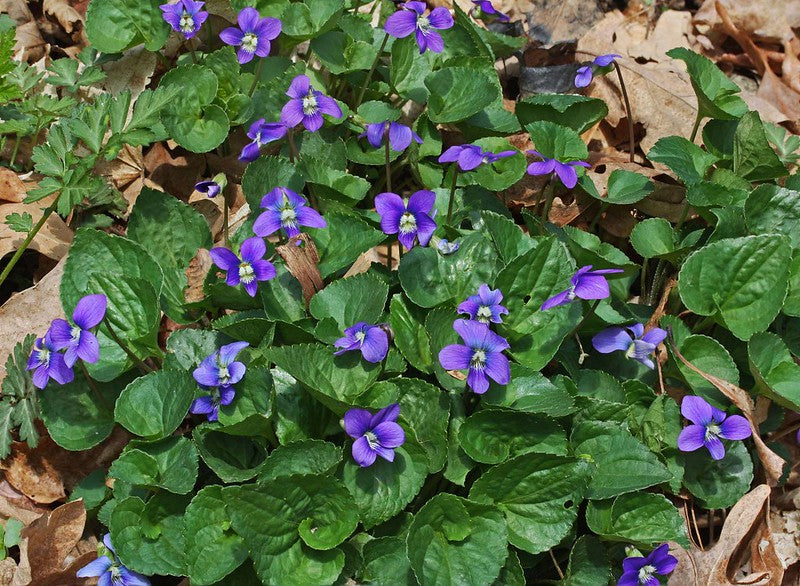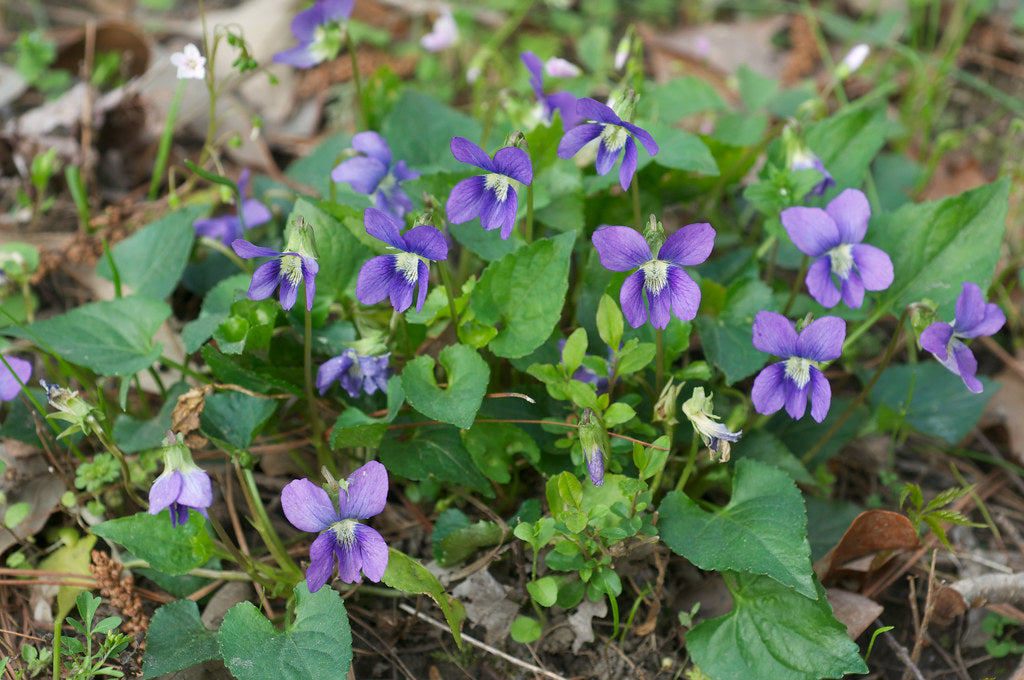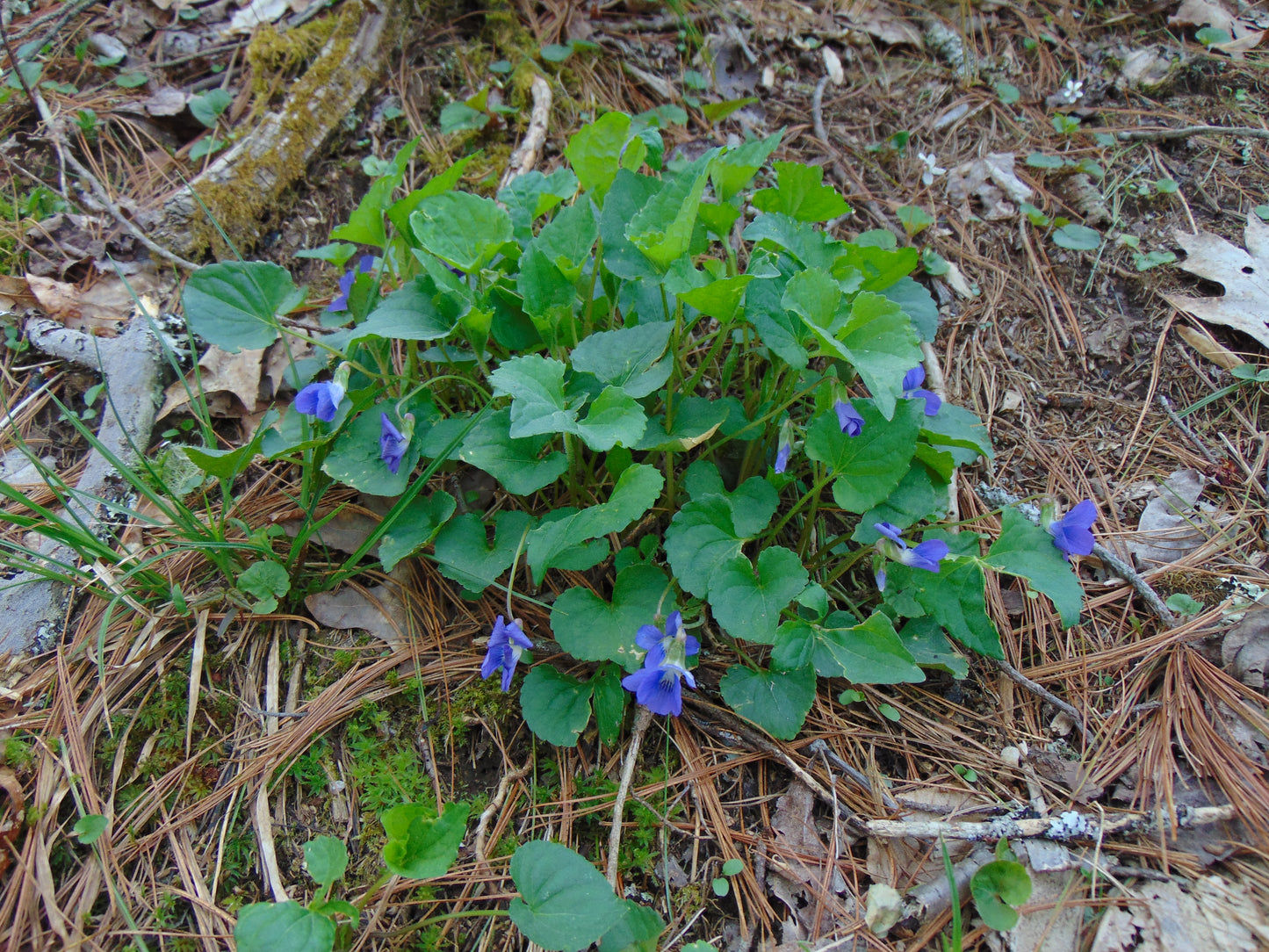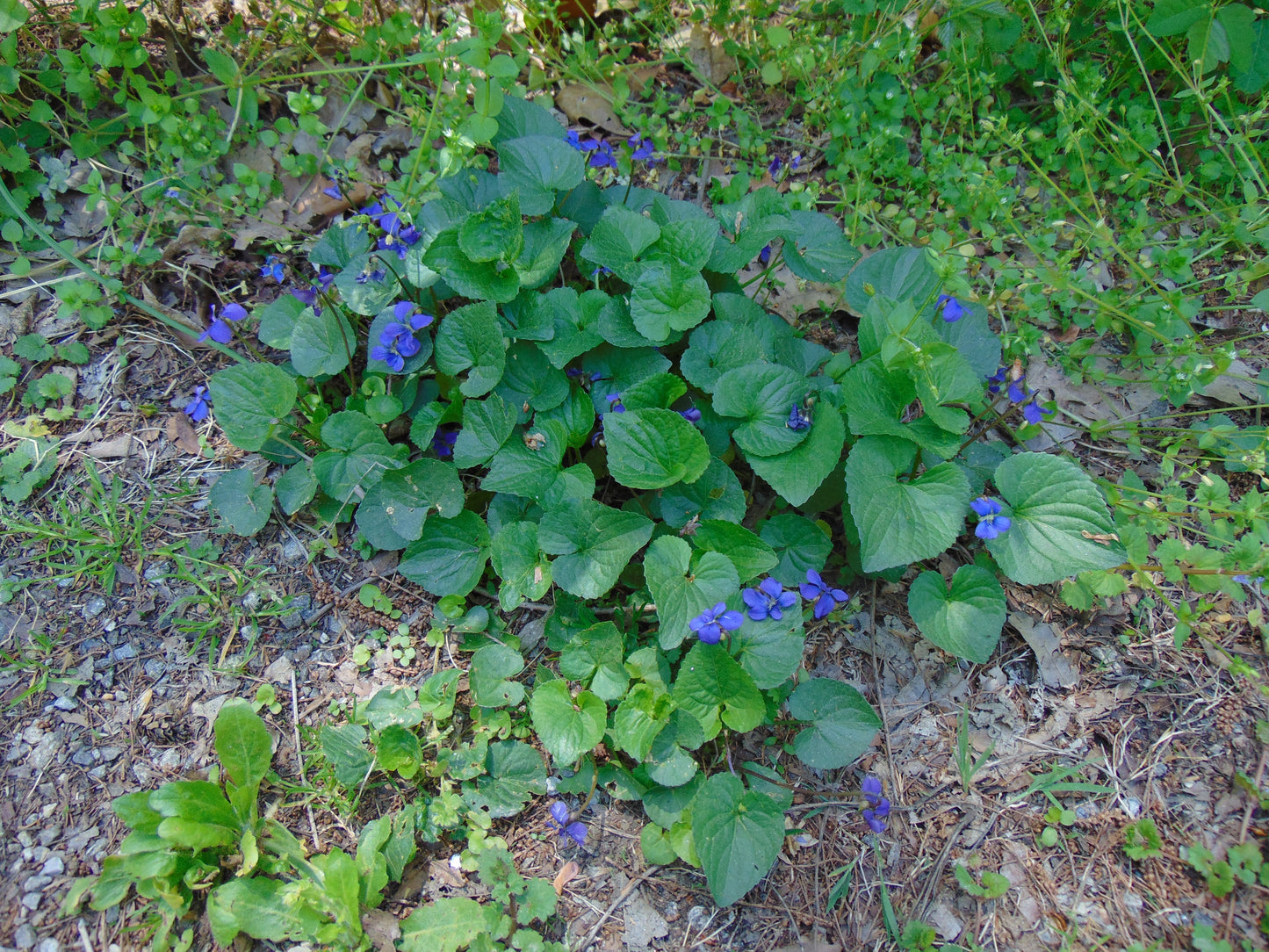Floridaseeds
Common Blue Violet Viola sororia 100 Seeds USA Company
Common Blue Violet Viola sororia 100 Seeds USA Company
Couldn't load pickup availability
Viola sororia, commonly known as the common blue violet or wood violet, is a perennial herbaceous plant native to eastern North America. Here's a description of Viola sororia:
Appearance: Viola sororia typically grows in small clumps and spreads via rhizomes to form dense ground cover. The plant features heart-shaped leaves with scalloped edges that grow from short petioles. The leaves are typically dark green in color, but can sometimes exhibit a purplish tinge.
Flowers: The most distinctive feature of Viola sororia is its delicate, five-petaled flowers. These flowers can vary in color from deep purple to blue, and occasionally white. They have a characteristic 'bearded' lower petal, which serves as a landing platform for pollinators. The flowers emerge in early spring and continue to bloom sporadically throughout the growing season.
Habitat: Common blue violets are found in a variety of habitats, including woodlands, meadows, and along stream banks. They prefer moist, well-drained soils and can tolerate partial shade, although they may also thrive in full sun if provided with sufficient moisture.
Ecological Importance: Viola sororia plays an important role in its native ecosystems as a source of early-season nectar for pollinators such as bees and butterflies. The foliage provides shelter and habitat for small animals and insects, contributing to overall biodiversity.
Cultural Significance: In addition to its ecological importance, common blue violets have cultural significance as symbols of spring and renewal. They are often featured in literature, folklore, and art as harbingers of the changing seasons.
Edibility: The leaves and flowers of Viola sororia are edible and have been used historically in culinary applications. They can be eaten raw in salads or cooked as greens, and the flowers can be used as a garnish or brewed into tea.
Materials
Materials
Shipping & Returns
Shipping & Returns
Dimensions
Dimensions
Care Instructions
Care Instructions
Share










